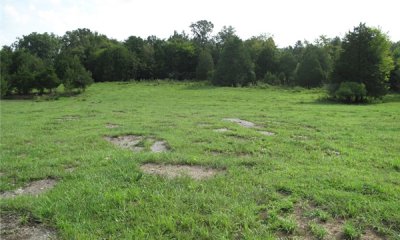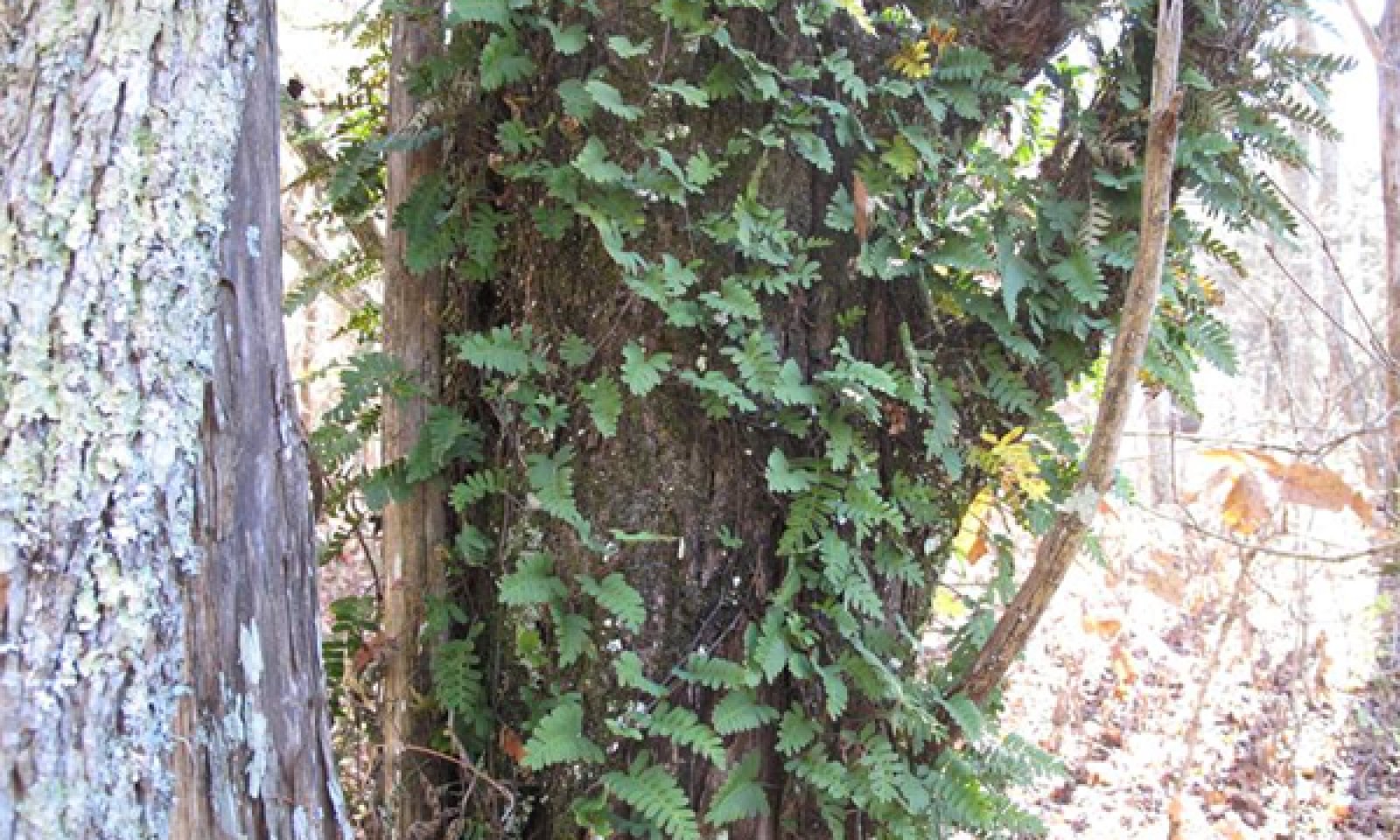
Thermic Shallow Well Drained Alfic Limestone Uplands
Scenario model
Current ecosystem state
Select a state
Management practices/drivers
Select a transition or restoration pathway
- Transition 1A More details
- Transition 1B More details
- Transition 1C More details
- Restoration pathway 2A More details
- Transition 3A More details
- Restoration pathway 4B More details
- Transition 4A More details
- Restoration pathway 4A More details
-
No transition or restoration pathway between the selected states has been described
Target ecosystem state
Select a state
State 1
Dry Calcareous Forest and Glade Reference State

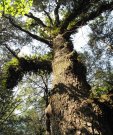





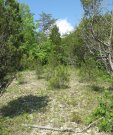



Description
The reference community for this ecological state occurs as a mosaic of dry forests, woodlands and small glades across the landscape. Past disturbance, both human caused and naturally occurring, can influence the degree of openness and thereby the distribution of species. In addition, the strike of limestone bedrock often determines where true glades versus forests occur. Where strike is sharp, solution pipes form and deeper soils accumulate, favoring tree growth. Where bedrock is more level, with shallow soils forming, glades and woodlands tend to occur. This is highly variable across the Major Land Resource Area and species can shift temporally due to edaphic conditions from year to year. For example, in periods of drought, forest species retreat, which creates the open conditions that favor grasses and herbs.
Submodel
State 2
Invaded State
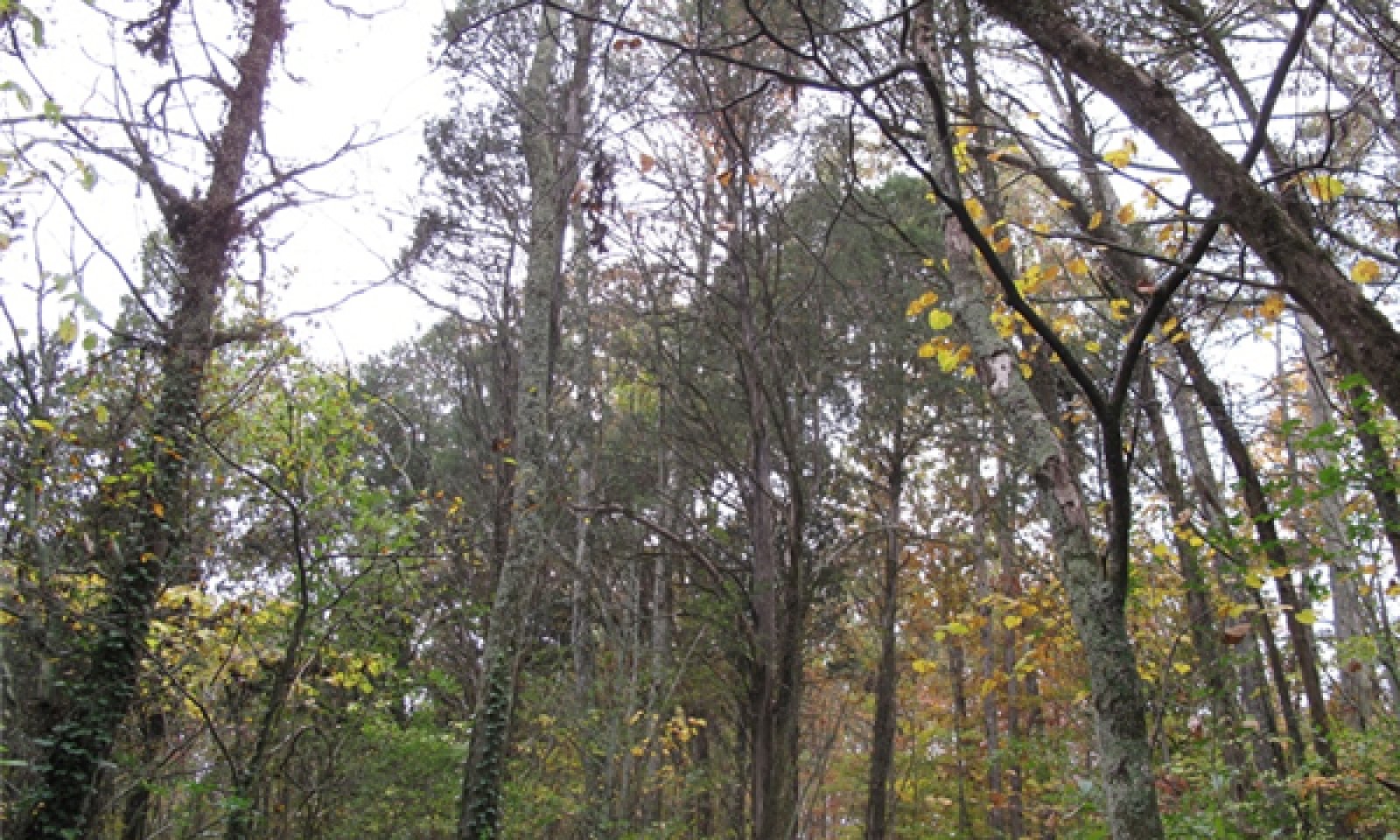




Description
Invasive exotic plants are species of plants that have been intentionally or unintentionally introduced into an area outside of their natural range. These plants are rapidly becoming one of the most pressing management issues for land managers. Exotic species can overwhelm native plants by claiming resources such as nutrients, water, light, and space and can ultimately totally displace native species (Tennessee Exotic Pest Plant Council). By modifying or completely altering the vegetation community, exotic plants can significantly threaten native wildlife communities, including insects that act as pollinators for agriculture crops. The effects are cascading and far reaching and can be extremely detrimental to ecosystem health and stability.
Invasion by exotic plants is a significant threat to this ecological site. In the glade phase of the reference state, invasion by the native eastern redcedar due to fire suppression can also be a threat. Prescribed fire and mechanical removal can be useful for creating open conditions conducive to glade plants. For clarification, this state description refers only to invasion by exotic plants.
Exotic plant invasion is particularly problematic on this site for a number of reasons. Most of this site (glades and woodlands) has at one time been grazed by domestic livestock, which both introduced exotic plants into the site and created a disturbance that favored their establishment (Baskin and Baskin 1996; Cofer et al. 2008). Not all grazed sites were entirely cleared for pasture. The degree of disturbance as well as the time since abandonment will determine the extent of invasion. Secondly, the lack of natural disturbances, such as fire, have led to the expansion of invasive exotic plants due to the processes of natural succession. One of the most problematic exotic species on this site is Nepalese browntop, which is extremely tolerant of shade. As open conditions become closed forests, it spreads. Likewise, Chinese privet has invaded both glade and forested phases of this site. Both Nepalese browntop and privet inhibit the use of prescribed fire, complicating restoration efforts.
Two of the protected areas that fall within this ecological site have management plans that describe their issues with exotic plant encroachment into glade/woodland systems. In one, autumn olive, sericea lespedeza, Chinese privet, Amur honeysuckle, Japanese honeysuckle, multiflora rose, crownvetch, Nepalese browntop, and Johnsongrass are listed as threats to their preserve. In another plan, Chinese privet is listed as a significant threat to the natural integrity of the site. Cofer et al. (2008) found that the exotic species Chinese privet, oxeye daisy, and common dandelion occurred on the majority of the glades in their study of 40 cedar glades in Rutherford County, Tennessee.
The occurrence and abundance of exotic plant species on this ecological site will vary based on disturbance history and location. Sites adjacent to roads or disturbed areas are more likely to become invaded. Management plans should be based on local conditions and tailored to the exotic species present. In most cases, if no action is taken to combat invasions, the site will never entirely return to the reference plant community.
Submodel
Description
This state represents a once-forested area now cleared for pasture. The Official Soil Series description for Barfield states that about 50 percent of the original vegetation has been cleared and that most cleared areas are used for pasture. Pasture may be slightly less common on the other mapped soil series included in this site description. Limestone rock outcrop and bare ground related to rock outcrop is common on this site and is often noted in pastures.
Most pastures are very old and have been established for a long time. Management practices focus primarily on maintaining healthy pasture conditions rather than new pasture establishment, although that is certainly an option. Balancing stocking rates, grazing rotation, and nutrient inputs are the primary management concerns.
In general, pasture management recommendations focus on maximizing desirable forage species to outcompete undesirable or weedy species. Production practices that result in overgrazing and low fertility levels favor emergence, propagation, and growth of weeds (Green et al., 2006). Effective pasture management includes the following practices:
- maintaining proper soil pH and fertility levels
- using controlled grazing practices
- mowing at proper timing and stage of maturity
- allowing new seedlings to become well established before use, and
- renovating pastures when needed (Green et al. 2006).
Tennessee has developed a list of desirable species, intermediate species and undesirable species for use in a Pasture Condition Scoresheet, which can be used to develop management recommendations on a site by site basis. District Conservationists as well as the State Grazing Specialist can be consulted to assist in developing management recommendations.
Perilla (Perilla frutescens) mint is an exotic, invasive weed that has become a major problem in many pastures. It causes more cattle deaths (in Tennessee) than any other toxic plant (Steckel and Rhodes, 2007). Keeping a ready supply of quality feed available for farm animals in the late summer and early fall will help to minimize the risk to livestock. Cattle will not normally feed on perilla unless there is a shortage of other feed.
Submodel
State 4
Transitional Field State
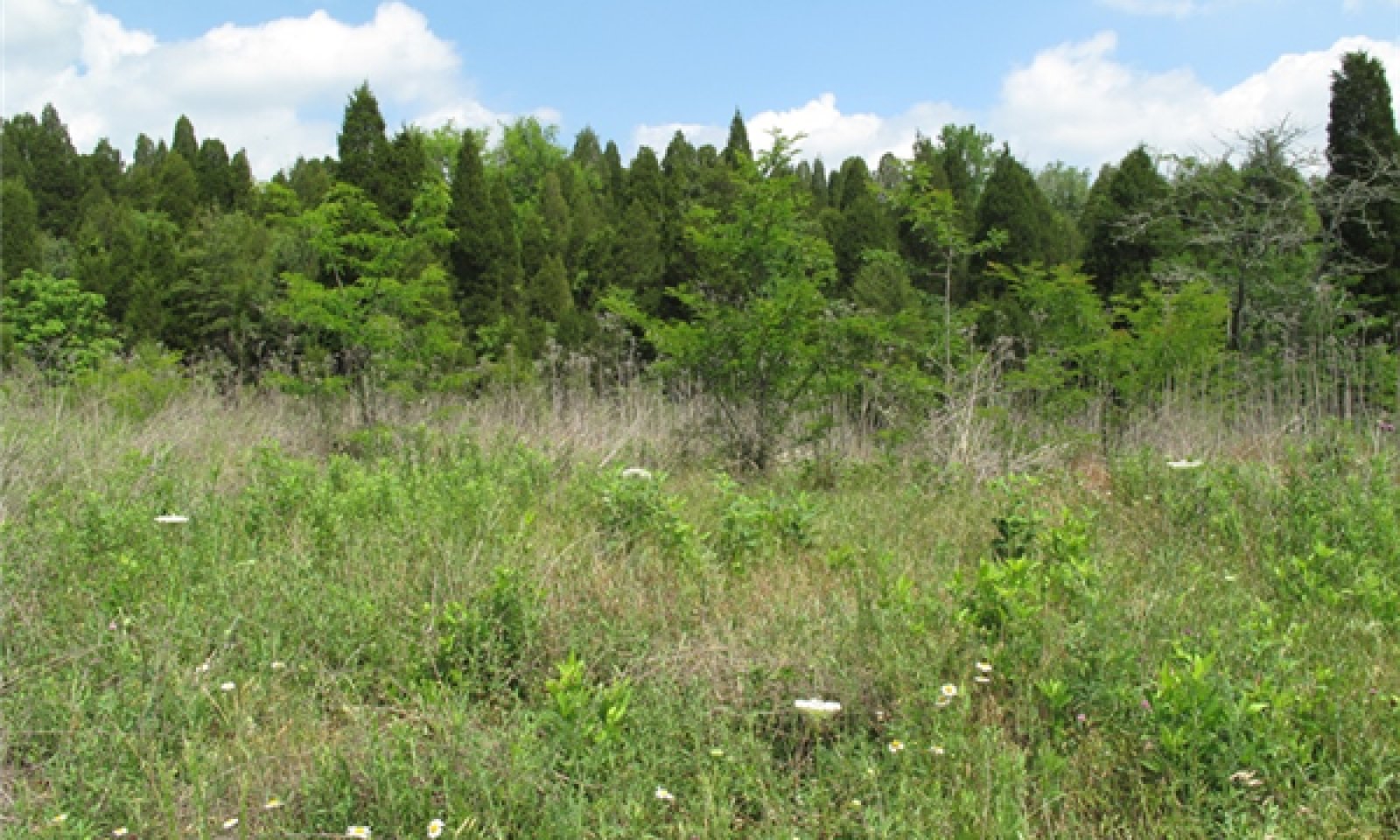


Description
This is a transitional state representing an important step in the natural succession of this ecological site. In this state, the plant community is moving from a cleared or managed grassland state to a forested state, whether in reference condition or invaded. Typically, the plant community consists of a high number of grasses, both native and introduced. The types and amounts of grasses are largely related to past land-use. If the site was cleared but never grazed by domestic livestock or managed as a pasture, native warm-season grass species would be more common. Obviously, where land was cleared for pasture, species such as tall fescue would be present, along with a higher number of weedy exotics. This state will also contain a high number of native asters, including the goldenrods and the daisies, which can be important to pollinators and wildlife. One plot was on a wildlife management area, which was focused on dove habitat.
Woody species that will begin to encroach include eastern redcedar, honeylocust, winged elm, black walnut (Juglans nigra), and boxelder (Acer negundo). Periodic mowing can keep this state in an open condition. In some areas, rock outcrop will naturally maintain openness. Mowing becomes almost impossible quickly, as honeylocust especially, begins to encroach. If openness is desired, mowing should be done at least once per year, if not more often.
Exotic plant species can become a problem in this state, especially as it transitions over to the invaded state. Because of the openness and relatively short time period since clearance, it is susceptible to a host of non-native plant pests, which can change natural succession pathways and push this state into an invaded state rather than back to the reference community. The type and amount of past disturbance, the degree of interruption of natural disturbance cycles and the surrounding flora will all play a role in which trajectory and to what degree, this state can move. Typical exotic species found in this state include the privets, the exotic lespedezas, Nepalese browntop and the exotic honeysuckles to name a few. In most cases, this state will require some type of exotic plant management if it is to return to the reference plant community.
Submodel
Mechanism
The reference community can become susceptible to invasion by exotic plants if natural disturbance regimes are hampered, if there is a history of human-caused disturbance such as unrestricted grazing, and/or if a site is located close to an invaded area, such as a roadside. In some cases, eastern redcedar, a native species, can become invasive on glades.
Mechanism
The reference community can be and has been in many cases, transitioned into a managed grassland. This requires typical pasture establishment techniques such as clearing trees, establishing pasture grasses and forbs and continuing management such as fertilizing, rotational grazing, etc.
Transition 1C


Mechanism
If an area is cleared of trees and abandoned, natural succession will begin and in a short amount of time, woody species such as eastern redcedar, honeylocust (Gleditsia triacanthos) and winged elm will dominate the site, making mowing almost impossible. In some places, these areas are intentionally kept open for wildlife. Mowing schedules should consider the rapid colonization of native woody species.
In areas where succession starts from an abandoned pasture, species such as tall fescue and red clover may be present. These areas are particularly susceptible to invasion by exotic plant species.
Mechanism
For glade areas where eastern redcedar has encroached, some mechanical/chemical clearing may be in order before any use of prescribed fire would be effective. In areas where there is a severe exotic plant invasion in addition to cedar encroachment, prescribed fire should be used with extreme caution. Fire is known to favor exotic plants and a misapplication could result in exacerbating the invasion extent.
Management of exotic, invasive plants is critical to restore this state to reference conditions. Most invasions require long-term management over years, involving multiple treatments which can vary by species and extent of invasion. Management should be site based and species specific. Technical resources should be consulted to develop site-based management prescriptions.
Relevant conservation practices
| Practice | External resources |
|---|---|
|
Native Plant Community Restoration and Management |
|
|
Invasive Plant Species Control |
|
|
Herbaceous Weed Control |
Mechanism
The managed grassland state will quickly begin to revert to forest, in most cases, once management and grazing stops. Typically, redcedar and honeylocust will be the first woody invaders and will dominate the site in very little time. Once established, these woody species, especially honeylocust, make it difficult to push this state back to a managed grassland because mowing becomes impossible at a point. Exotic plant species are commonly noted in areas transitioning from a managed grassland state to a different plant community. In some cases, exotic plant management will be needed, depending on management objectives.
Restoration pathway 4B


Mechanism
Depending on the degree of ecological degradation present on a site in this state, it can generally be restored back to a reference plant community through natural succession, exotic plant management and mechanical control of undesirable tree species. Encouraging oak regeneration can also help to push this state back into the reference community. In some cases, prescribed fire might be beneficial but care should be taken as it has been known to spread invasive, exotic plants.
Mechanism
This state is likely to transition to the Invaded State if no management is done to control exotic species. Native trees will naturally seed in over time as well.
Model keys
Briefcase
Add ecological sites and Major Land Resource Areas to your briefcase by clicking on the briefcase (![]() ) icon wherever it occurs. Drag and drop items to reorder. Cookies are used to store briefcase items between browsing sessions. Because of this, the number of items that can be added to your briefcase is limited, and briefcase items added on one device and browser cannot be accessed from another device or browser. Users who do not wish to place cookies on their devices should not use the briefcase tool. Briefcase cookies serve no other purpose than described here and are deleted whenever browsing history is cleared.
) icon wherever it occurs. Drag and drop items to reorder. Cookies are used to store briefcase items between browsing sessions. Because of this, the number of items that can be added to your briefcase is limited, and briefcase items added on one device and browser cannot be accessed from another device or browser. Users who do not wish to place cookies on their devices should not use the briefcase tool. Briefcase cookies serve no other purpose than described here and are deleted whenever browsing history is cleared.
Ecological sites
Major Land Resource Areas
The Ecosystem Dynamics Interpretive Tool is an information system framework developed by the USDA-ARS Jornada Experimental Range, USDA Natural Resources Conservation Service, and New Mexico State University.

